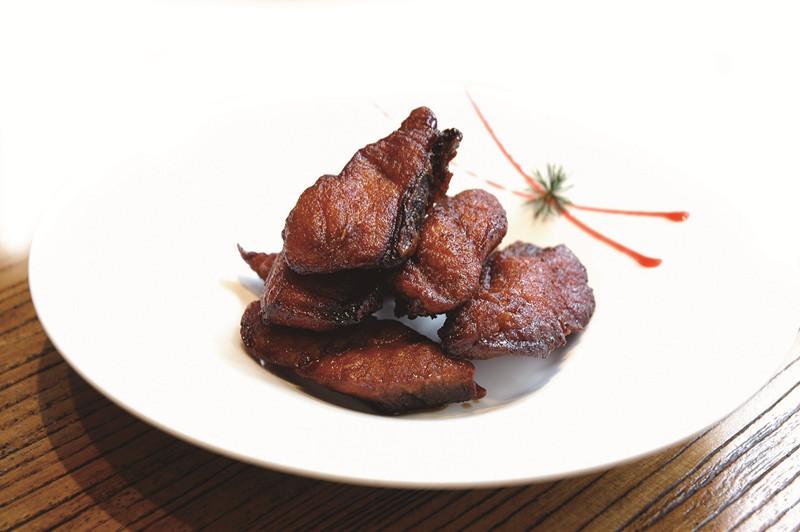
 Old Version
Old Version
Smoking, along with salting and air-drying, may be one of the earliest methods of preserving food known to man. Before humans emerged from Africa to populate the Earth, we were skewering meat and fish and leaving it suspended over campfires. Over the millennia, we learned to appreciate smoked food for its depth of flavor as much as for its longevity.
China is no exception to the rule, and while smoked and other preserved foods might not leap to mind when one considers a cuisine world-famous for its commitment to fresh ingredients, peek below the surface and one finds the Chinese as fanatical as any other nation.
As with everything, though, smoked foods in China come with a local twist. First of all, the kind of deep smokehouse treatment such as that received by herrings in Britain, cheeses in the Netherlands and pork in Germany is relatively rare in the Middle Kingdom – historically, China has been relatively fuel-poor (hence the penchant for stir-frying, boiling and steaming over roasting – they use less kindling), and thus slow-smoking over days and weeks simply wasn’t cost-effective.
Chinese smoked foods tend towards lightness; the original flavors and textures of the base ingredients remain recognizable. This is also a byproduct of the chosen fuel source – items such as smoked duck are often infused, not over wood chips, but over smoldering tea leaves. Zhang cha ya – a delicately fragrant whole duck, all crispy skin and unctuous flesh – is one example of this. The tea imparts a faintly astringent delicacy to the meat, making it both moreish and light. Smoked chicken, its skin with a light, tender bounce and its meat heady with notes of maple, is popular across the country, particularly shredded.
Chinese-style smoked tofu is a curiosity I first discovered in the western province of Shanxi, where local varieties of tofu, prepared with organic soybeans and spring water, are particularly excellent. Firm pressed tofu is intensely smoked in blocks which produces a deep, coffee-tinted rind and imparts a rich aroma throughout the tofu which can then be sliced or shredded and mixed with soy sauce, sesame oil and scallions as an appetizer.
In China’s south and west, smoked, preserved hams are a regional delicacy – from Yunnanese huo tui (fire leg) to Hunanese la rou (preserved fatty pork). Traditionally, recipes vary from household to household, but spanking fresh pork needs to be heavily salted at the beginning of winter, then sliced into blocks and suspended from the ceiling of the home or, in the hotter, drier areas, outdoors, where it is left to mature. Many rural residents found that the meat developed a more complex flavor (and would dry out faster) if suspended over the cookstove, and this smoked ham can, once fully mature, be diced and tossed with fried rice, sliced into braised vegetables, or simply eaten straight from the block.
Peking duck, the darling of Beijing gastronomes, owes much of its intense flavour to woodsmoke. While not all variants of Peking duck are roasted in open-fire ovens, for those that are, chefs are particular about which varieties of wood impart the best aroma. Most chefs look to the orchard, and cherry, pear and apricot wood are all popular options – and all impart additional sweetness to the oil-rich, buttercrisp skin of this legendary luxury dish.
Buyer beware, however – one of the Huaiyang school’s most famous dishes, “smoked fish,” is in fact nothing of the sort, but derives its name from its deep mahogany color. Firm freshwater fish steaks are deep fried before being soused in a mix of rice wine, scallions and five-spice powder. Sweet and aromatic with an irresistible crunch, it may be ersatz smoked food, but it’s nonetheless delectable.